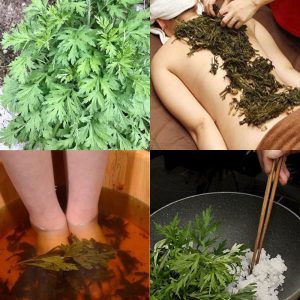Bay leaves, derived from the laurel tree, are primarily known for their culinary usage, adding a distinct aroma and flavor to various dishes. However, their utility extends beyond the kitchen. Bay leaves have been used for centuries in traditional medicine, owing to their rich composition of essential oils, vitamins, and minerals. Their potential to offer therapeutic benefits has intrigued many, leading to explorations of their uses in various home remedies, including treatments for foot conditions.
Historical Significance of Bay Leaves in Medicine
Bay leaves hold a venerable place in ancient medical practices. The Greeks and Romans are known to have used them for their purported healing properties, often creating poultices or infusions to treat a variety of ailments. According to folklore, bay leaves were used to alleviate pain, reduce inflammation, and even ward off negative energies. These historical applications highlight the cultural and medicinal importance of bay leaves throughout human history.
Advertisement
Chemical Composition and Active Compounds in Bay Leaves
The chemical composition of bay leaves includes essential oils such as eugenol, cineol, and eucalyptol, as well as compounds like tannins, flavonoids, and alkaloids. These bioactive constituents are known for their antiseptic, anti-inflammatory, and antifungal properties. The presence of vitamins A and C, along with essential minerals like calcium, iron, and magnesium, further contributes to their potential health benefits, particularly in promoting better skin and foot health.
Common Foot Conditions and Alternative Treatments
Feet are susceptible to a variety of conditions such as athlete’s foot, plantar fasciitis, calluses, and fungal infections. Traditional treatments often involve the use of antifungal creams, pain relievers, and other pharmaceutical interventions. However, there is a growing interest in alternative treatments, including the use of natural remedies like bay leaves, which may offer relief with fewer side effects.
How Bay Leaves Interact with Skin and Foot Health
When applied to the skin, the essential oils and active compounds in bay leaves can penetrate and provide localized benefits. Their anti-inflammatory properties help reduce swelling and pain, while antifungal components can assist in managing infections. Additionally, the antioxidants present in bay leaves promote skin health by neutralizing harmful free radicals and supporting the natural healing process.
Traditional Remedies Involving Bay Leaves for Foot Care
In traditional medicine, bay leaves have been used in various forms, such as foot soaks, poultices, and oils, to treat foot ailments. One common remedy involves boiling a handful of bay leaves in water, allowing the mixture to cool, and then soaking the feet in it to relieve discomfort and swelling. Another method includes crushing fresh bay leaves and applying them directly to afflicted areas, covering with a bandage to keep them in place and enhance absorption of the healing compounds.
Scientific Studies on the Efficacy of Bay Leaves in Foot Treatments
While anecdotal evidence abounds, scientific studies specifically examining bay leaves for foot treatments are limited but promising. Research has demonstrated the antimicrobial and anti-inflammatory properties of bay leaf extracts, suggesting their potential effectiveness in treating infections and reducing pain and swelling. More comprehensive studies are needed to fully validate these benefits, but initial findings support the traditional uses of bay leaves in foot care.
Benefits of Using Bay Leaves for Foot Conditions
Using bay leaves for foot conditions can offer several benefits, including reduced inflammation, relief from pain and discomfort, accelerated healing of minor wounds, and antibacterial protection. Their natural composition makes them a favorable option for individuals seeking holistic and non-pharmaceutical approaches to foot health. Additionally, they are accessible and cost-effective compared to many commercial foot treatments.
Step-by-Step Guide to Applying Bay Leaves on Your Foot
1. Gather fresh or dried bay leaves and ensure they are clean.
2. Boil a handful of bay leaves in a pot of water for about 10 minutes.
3. Let the water cool to a comfortable temperature.
4. Soak your feet in the bay leaf-infused water for 20-30 minutes.
5. For targeted application, crush fresh bay leaves and apply the paste directly to the affected area. Secure with a bandage and leave it on for a few hours. 6. Repeat the process daily for best results.
Expected Results and Timeline for Improvements
Users may start to notice initial relief within a few days, with significant improvements typically observed after a week of consistent application. The reduction in pain and swelling can vary based on the severity of the condition and the individual’s response to the treatment. Chronic conditions may require longer use before noticeable benefits are achieved.
Potential Side Effects and Precautions
Generally, bay leaves are safe for topical use, but some individuals may experience allergic reactions or skin irritation. It is advisable to perform a patch test on a small skin area before broader application. Avoid using bay leaves if you have known allergies to plants in the Lauraceae family. Pregnant and breastfeeding women should consult a healthcare provider before using herbal treatments.
Testimonials and Anecdotal Evidence
Many individuals have reported positive experiences with using bay leaves for foot care. Testimonials often highlight the reduction in pain and inflammation, as well as the soothing effect of bay leaf soaks. Some users have shared stories of successfully managing chronic foot conditions with regular bay leaf treatments, attributing their recovery to this natural remedy.
Advertisement
Conclusion: The Potential of Bay Leaves for Foot Health
Bay leaves, with their rich history and potent chemical composition, present a compelling option for natural foot care. While more scientific research is necessary to fully endorse their efficacy, the combination of traditional knowledge and emerging studies suggests that bay leaves can be an effective alternative treatment for a variety of foot conditions. Their accessibility, affordability, and low risk of side effects make them a valuable addition to holistic health practices.





